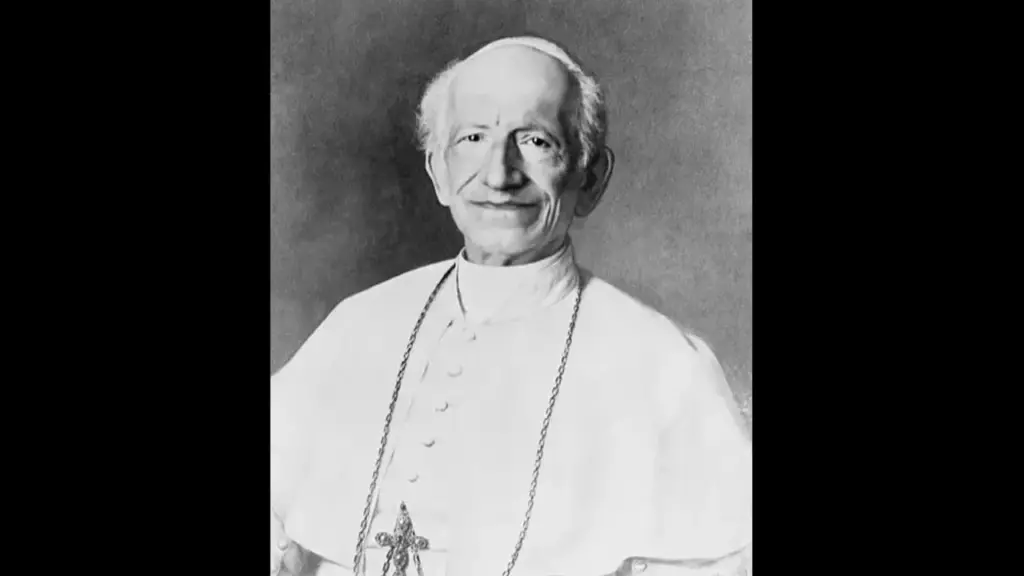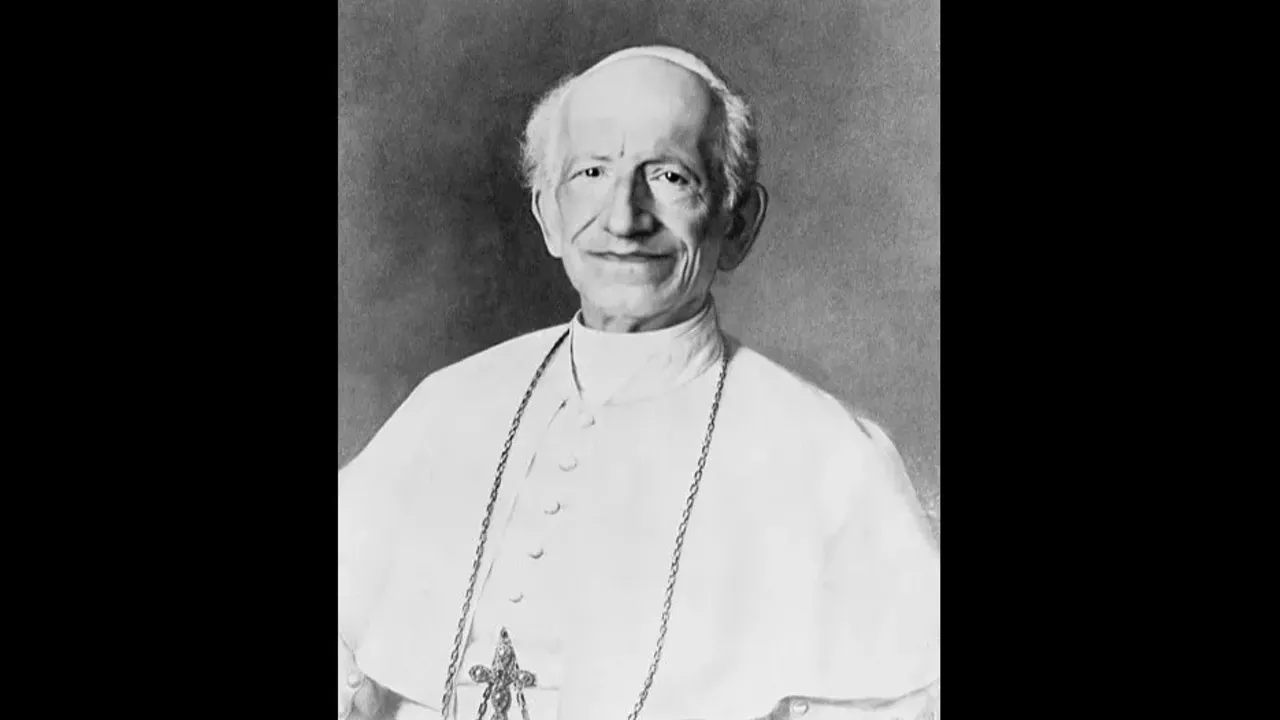
Is Pope Leo XIII a Saint? Exploring His Life, Papacy, and Sainthood
The question of whether Pope Leo XIII is a saint is one that resonates deeply within the Catholic Church and among those interested in its history. Pope Leo XIII, who reigned from 1878 to 1903, left an indelible mark on the Church and the world. His pontificate was characterized by significant social, political, and intellectual contributions. But does this remarkable legacy qualify him for sainthood? This article delves into his life, his influential papacy, and the process that led to his beatification but stops short of full canonization, exploring why Pope Leo XIII, while revered, is not considered a saint in the fullest sense.
Early Life and Background
Born Vincenzo Gioacchino Raffaele Luigi Pecci in 1810 in Carpineto Romano, near Rome, Pope Leo XIII came from an aristocratic family. He received a rigorous education at the Jesuit Collegio Romano and later at the Accademia dei Nobili. His early academic pursuits laid the groundwork for his future intellectual endeavors. Ordained a priest in 1837, Pecci quickly rose through the ranks of the Church hierarchy. Before becoming Pope Leo XIII, he served as the Archbishop of Perugia, where he demonstrated administrative skills and a commitment to social justice.
The Papacy of Leo XIII
Elected pope in 1878, Pope Leo XIII inherited a Church facing numerous challenges. The Papal States had been lost, and anti-clerical sentiments were growing across Europe. His papacy, however, was marked by a series of groundbreaking initiatives and encyclicals that addressed the pressing issues of his time.
Rerum Novarum and Social Teaching
Perhaps the most significant contribution of Pope Leo XIII was his encyclical Rerum Novarum (Of New Things), issued in 1891. This landmark document addressed the social and economic conditions brought about by the Industrial Revolution. Rerum Novarum articulated the rights and duties of capital and labor, advocating for fair wages, the right to form unions, and the role of the state in promoting social justice. It laid the foundation for modern Catholic social teaching and continues to influence discussions on economic ethics today. The impact of Pope Leo XIII‘s teachings cannot be overstated.
Promotion of Thomism
Pope Leo XIII was a strong proponent of Thomism, the philosophical and theological system of St. Thomas Aquinas. He believed that Aquinas’s teachings provided a solid intellectual basis for addressing the challenges of modernity. He encouraged the study of Thomism in seminaries and universities, leading to a revival of interest in Aquinas’s work. This emphasis on reason and faith helped the Church engage with the intellectual currents of the time. He saw value in integrating classical philosophy with theological doctrines.
Diplomacy and International Relations
Pope Leo XIII was also a skilled diplomat who worked to improve relations between the Church and various nations. He sought to resolve conflicts with governments and to defend the rights of Catholics around the world. His diplomatic efforts helped to strengthen the Church’s position on the international stage. Pope Leo XIII navigated complex political landscapes with a strategic vision.
The Path to Sainthood: Beatification
The process of canonization in the Catholic Church is a rigorous one, involving several stages. The first step is the declaration of a candidate as a Servant of God, followed by a thorough investigation into their life and virtues. If the candidate is deemed to have lived a life of heroic virtue, they may be declared Venerable. The next step is beatification, which typically requires the verification of a miracle attributed to the candidate’s intercession. Canonization, the final step, requires a second verified miracle after beatification.
Pope Leo XIII was declared a Servant of God and later Venerable. He was beatified on October 20, 1903, by Pope John Paul II. Beatification is a significant step towards sainthood, recognizing that the individual is in heaven and can be publicly venerated in certain regions or by specific groups. However, beatification is not the same as canonization.
Why Isn’t Pope Leo XIII a Saint?
Despite his beatification, Pope Leo XIII has not been canonized as a saint. The primary reason is the absence of a second verified miracle attributed to his intercession after his beatification. The Catholic Church requires two verified miracles for canonization to ensure the individual’s direct intervention in response to prayers. While many people admire and respect Pope Leo XIII, the required second miracle has not been officially recognized.
The process of verifying miracles is meticulous and involves rigorous scientific and theological scrutiny. The alleged miracle must be inexplicable by natural means and must be clearly attributed to the intercession of the candidate for sainthood. Without this verification, the canonization process cannot proceed.
The Role of Miracles in Canonization
Miracles are considered divine signs that confirm the holiness of the individual and their closeness to God. They are seen as evidence that the person is able to intercede on behalf of those who pray to them. The verification of miracles is a crucial part of the canonization process, ensuring that the Church is confident in declaring someone a saint.
Legacy and Influence
Even without being canonized, Pope Leo XIII remains a highly influential figure in the history of the Catholic Church. His contributions to social teaching, his promotion of Thomism, and his diplomatic efforts have had a lasting impact. Rerum Novarum continues to be studied and cited in discussions on social justice and economic ethics. His efforts to modernize the Church’s approach to intellectual and political issues have also left a significant legacy. He is remembered for his vision and his commitment to addressing the challenges of his time. Many consider Pope Leo XIII a pivotal figure in modern Church history.
Continued Reverence
Despite not being a saint, Pope Leo XIII is still revered by many Catholics. His writings and teachings continue to inspire and guide people. His legacy as a reformer and a champion of social justice endures. Many Catholics pray for his intercession, hoping that one day a second miracle will be verified, leading to his canonization. The question of whether Pope Leo XIII is a saint is, for many, a matter of time and divine providence.
Conclusion
In conclusion, while Pope Leo XIII was beatified by Pope John Paul II, he is not currently recognized as a saint in the Catholic Church due to the absence of a second verified miracle after his beatification. Nevertheless, his profound impact on the Church and the world is undeniable. His encyclical Rerum Novarum remains a cornerstone of Catholic social teaching, and his efforts to promote Thomism and engage in diplomacy have left a lasting legacy. Pope Leo XIII‘s contributions to the Church are significant, and he remains a revered figure, even without the title of saint. The possibility of future recognition remains open, pending the verification of a second miracle attributed to his intercession. The story of Pope Leo XIII is a testament to the enduring influence of a pope who navigated the complexities of the modern world with wisdom and vision. The question of whether Pope Leo XIII is a saint may one day be answered affirmatively, but his historical significance is already firmly established. Understanding the life and legacy of Pope Leo XIII provides valuable insight into the evolution of the Catholic Church and its engagement with the social, political, and intellectual challenges of the modern era. Whether or not Pope Leo XIII is a saint, his contributions continue to resonate within the Church and beyond.
[See also: Catholic Social Teaching]
[See also: History of the Papacy]
[See also: Lives of the Popes]

